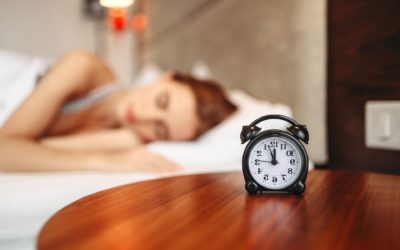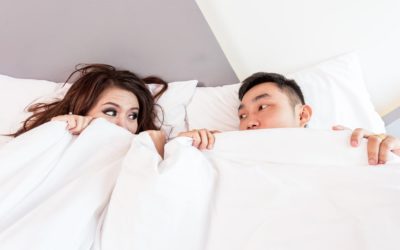How does light influence your health and fitness? It’s both simple and complicated.
Essentially, our internal processes are governed by our circadian rhythm. This is a phrase used to describe the timing of various internal events- like hormone production and release- as well as our sleep patterns. All animals have circadian rhythms, and humans are no different. As terrestrial mammals, our circadian rhythms are historically pegged to the sun’s rise and fall.
Most Influential Forms of Light
The sun emits light of many wavelengths, but the two most influential are high energy blue light (wavelengths between about 450 and 495 nanometers) and low energy red light (wavelengths around 620 to 750 nm). When the sun is high in the sky, especially at the beginning of the day, it emits huge amounts of blue light. This stimulates our circadian rhythm and we begin to produce cortisol- a stress hormone that among other things leads to alertness, wakefulness, focus, and an increase in appetite (it also spikes our metabolism). When the sun sets, the light we receive from it falls into the red part of the light spectrum, and our bodies wind down cortisol production in favor of melatonin- the hormone that makes us sleepy.
We’ve all experienced the sleepiness of a rainy day, but that’s more than just a ‘mood’- it’s the biological outcome of a lack of blue light exposure!
When we receive regular, consistent sunlight exposure, our circadian rhythm and all the processes ruled by it, like hormone production, are relatively stable. However, very few Americans today are out all day long- instead, we rely on artificial lighting to get through the day- much to our detriment.
Modern artificial lighting exposes us to far too much blue light for far too much of the day, contributing to health issues like insomnia, weight gain, fatigue, and mood disorders. However, you can do much to mitigate that exposure and use light as a stabilizing anchor- as opposed to a hurdle- for your health and fitness routine.
Structuring Your Fitness Routine Around Light
So, how can you structure your health and fitness routine around light? It requires some minor investments (of time and a little bit of money) and an understanding of light exposure’s affect upon human physiology.
Here is how you can retool the lighting in your environment to propel your health and fitness routine:
Waking with the Sun: If you live somewhere with consistent early morning sunlight exposure, consider investing in automatic curtain openers for your bedroom- that way you can literally wake with the sun! Otherwise, consider exposing yourself to blue light as quickly as possible upon waking- whether that be via a table lamp, light box, or opening your curtains yourself! This immediate blue light exposure kicks your body into “waking” mode and jumpstarts a whole host of vital body processes.
Morning Exercise: Have trouble eating in the am? According to scientists, pre-breakfast is the best time of day to work out- you take natural advantage of your body’s increased cortisol production, benefitting from great fat burning and muscle building properties in the process.
Mealtimes: Unsurprisingly, food also has a big effect on our circadian rhythm. Sticking to specific mealtimes every day helps regulate your metabolism and blood sugar- lessening the burden on organs like the pancreas. Scientists recommend eating a large breakfast and lunch- which you can facilitate with appetite-stimulating blue light- and a smaller dinner- which you can help make easier via appetite suppressing red light exposure.
Bedtime: In today’s world, proper lighting for a healthier bedtime routine is just as much a subtractive as it is an additive process- you’re going to want to cut out as many blue light sources, like phones and laptops and tvs, as possible- and make sure that your bedroom lighting is firmly in the red part of the spectrum. This will boost melatonin production, reduce cortisol levels, and help you relax and unwind before bed. Remember- keep your bedroom as dark as possible, too- you don’t want to disturb your sleep with unexpected blue light!
Light Therapy for Health and Fitness
If you’re concerned that the above won’t be enough to get your health and fitness routine on track, consider some additive options, like blue and red light therapy. You may be more familiar with these as treatments for skin conditions like acne, but both therapies can help boos your health in other ways.
Blue Light Therapy
Blue light therapy is typically used for the treatment of depression and mood disorders. It stimulates the production of cortisol and is suspected to balance serotonin activation in your brain, alleviating depressive symptoms of illnesses like SAD (seasonal affective disorder), which is typically believed to be a result of too much or too little light exposure. Blue light therapy also stimulated Vitamin D production, which also contributes to mental health regulation.
Red Light Therapy
Red light therapy is primarily used in treatment for sleep disorders, OCD, and also SAD (yes, SAD can also be caused by too much sunlight exposure, though it’s less common than winter time SAD). Red light therapy reduces the production of cortisol, a stress hormone that in excessive amounts can contribute to mood dysregulation.
Infrared red light therapy can also be used pre and post workout to boost performance, prevent injury, and boost healing.
Risks of Light Therapy
Too much of a good thing is true of light therapy, too. Excessive blue or red light exposure can trigger mood destabilization, sleep disturbances, fatigue and a host of other problems- so always use your lightbox according to doctor’s directions!
Light Influences on Health and Fitness FAQs:
What does red light do for your health routine?
Red light mimics end-of-day light- it’s a lower energy light that provokes melatonin production in our bodies, leading to decreased appetite. Red light exposure is necessary for a balanced sleep schedule.
What does blue light do for your health routine?
Blue light mimics morning and day light, and boosts the production of cortisol, a stress hormone that induces alertness and energy. Too much late in the day can disrupt your sleep.
Can you use light to influence your wakefulness (and bring on sleepiness?)
Yes. As mentioned above, you can use blue spectrum light to induce wakefulness, and red light to help you being the process of falling asleep.
What conditions can light exposure alleviate?
Blue light improves conditions associated with a lack of blue light exposure- like SAD, or excessive fatigue. Red light exposure can help treat insomnia, depression, anxiety, summertime SAD, OCD and other mood disorders. Blue light therapy can help alleviate wintertime SAD, fatigue, and Vitamin D production.


